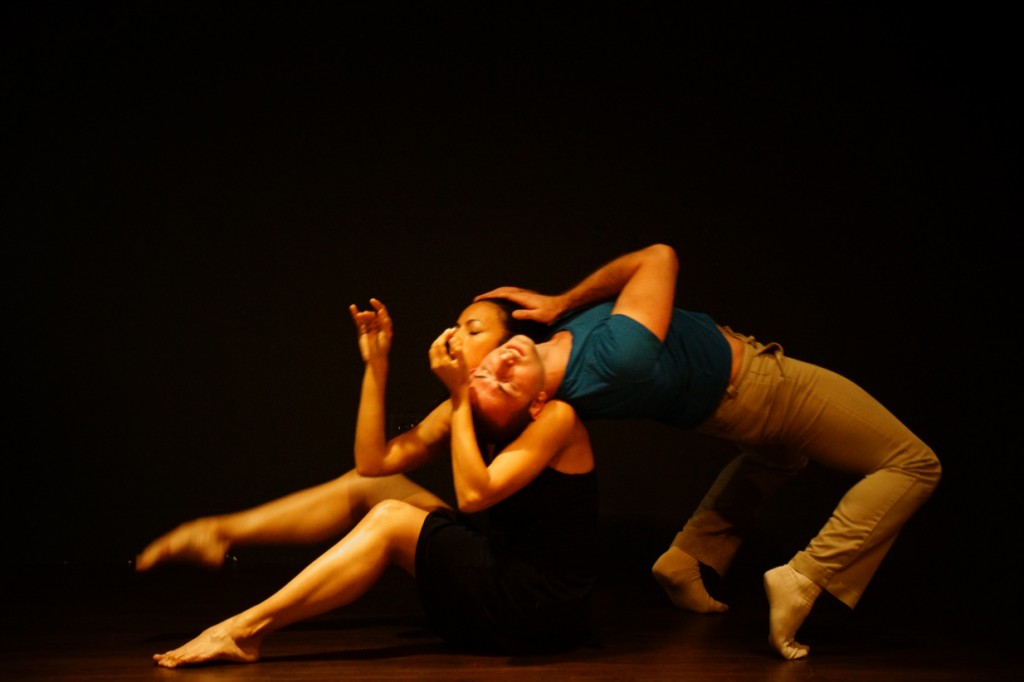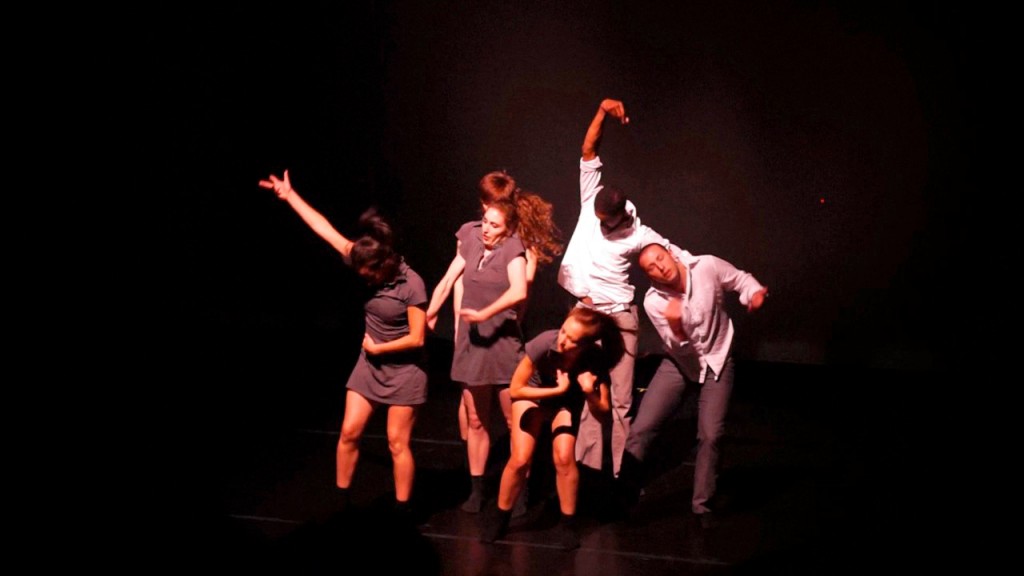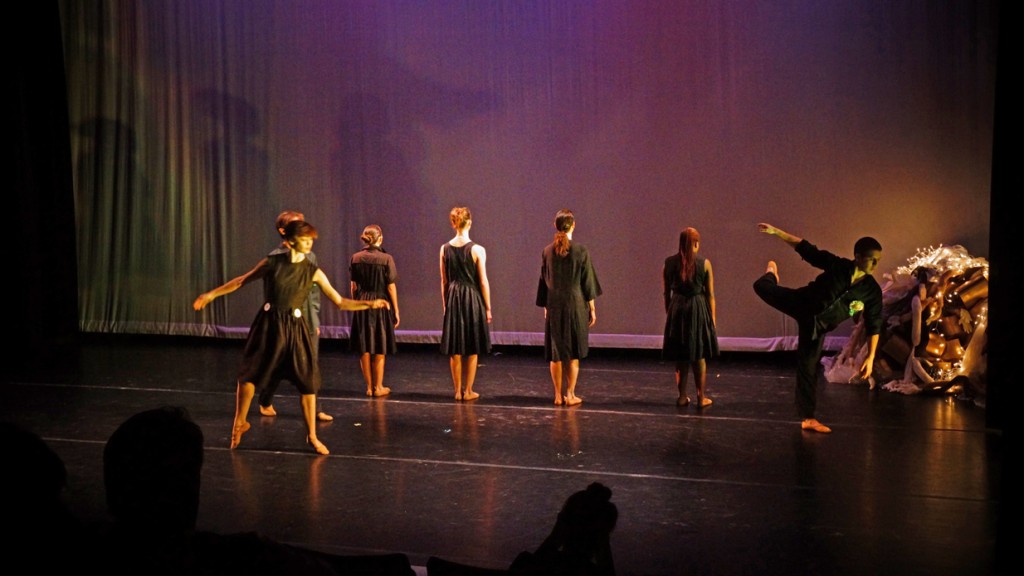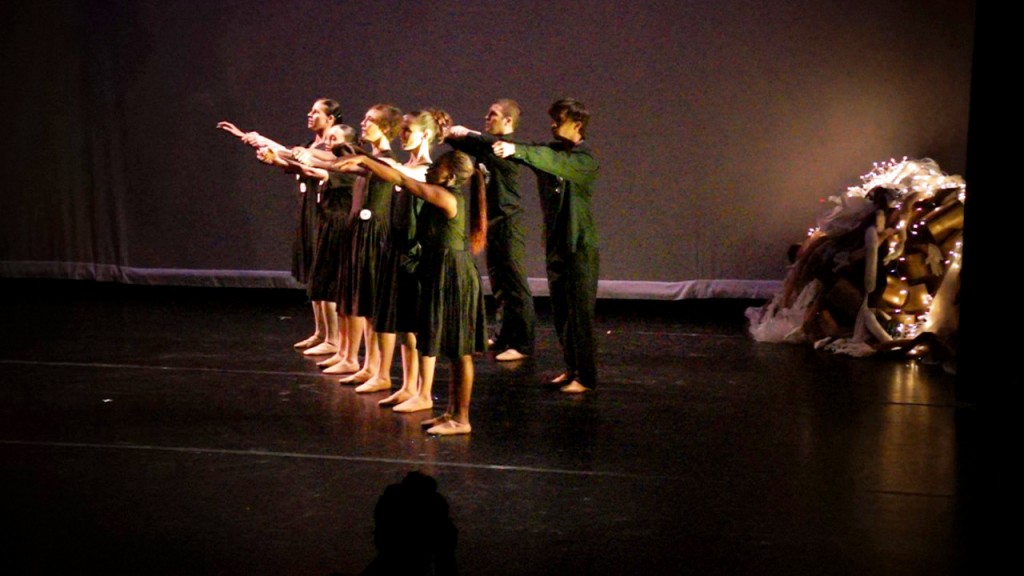
I “Lovejoy” the Daniel Lewis Dance Sampler
In celebration of National Dance Week, Dance NOW! Miami, Florida Dance Association and the Little Haiti Cultural Center presented an eclectic and diverse sampling of local modern dance companies and choreographers during the revival of the Daniel Lewis Miami Dance Sampler. The 11 individual performances, though a bit overwhelming to absorb in one evening, allows the audience to experience the depth of talent thriving across Miami-Dade.
The evening began with Dance NOW! co-founder Diego Salterini’s “Mitosis,” a precise and elegant choreography of two dancers who metaphorically split into two identical wholes. Brazarte Dance Company followed with “Corpo,” an energetic and gravity-challenging dance that seemed to pull the dancer’s bodies apart. However, the music didn’t sync with the costumes and choreography.
Next up: “Mother-Son(days)” by Pioneer Winter with dancer Ana Bolt. As always, “Mother-Son(days)” brought me to the edge of tears as Winter and Bolt move while Marie Whitman reads diary entries written by a 10-year-old Winter and his late mother Susan Winter. “Mother-Son(days)” communicates a longing for answers to life’s most common fears: death, aging and child-rearing.
There were other fascinating performances, like Karen Peterson and Dancers “Potpourria,” an excerpt with abled and mixed-ability dancers Jenny Larsson and John Beauregard. A full-length version of this piece will debut May 12 through 13 at the New World School of the Arts. But the two works that stood out for me were Brigid Baker’s simple, yet elegantly choreographed “Wonderlawn” (an excerpt from “Comet Lovejoy Survives”) and Luis Alberto Cuevas’ “It Gets to a Point.”
“It Gets to a Point” was an organic and spastic-elastic choreography accompanied by an incredible music selection — Vitamin String Quartet, Isley Brothers and No Doubt. The dancers thrust and contorted, pulled and pushed their bodies against each other as they spiraled and jiggled haphazardly across the stage with their hands up in the air. Lydia Bittner-Baird closed the performance with a possessed shakedown as the lights faded.
“Wonderlawn,” by the timeless Baker, seemed to address economic issues through the selection of costume and the simplicity and lightness of movement. Accompanied by the music of Gavin Bryars, the performance opened with the dancers meandering across the staged environment, which was covered with handcrafted objects — giant gold cardboard chain links, strings of white lights, swaths of fabrics and other objects. Some of the dancers carried unidentified objects in their hands while other threw paper airplanes across the stage. Weird, yes, but interesting. Art, like Baker, can’t be tamed.
A few minutes into the performance, the dancers, seven in total, cleared the floor and piled all of the stuff into a sort of Christmas bush of objects. They swept the floor and then they began to move with the lighter forces of gravity. They spun and pirouetted, glided and leapt, tilted and bowed across the space like individual “Lovejoy” comets rotating on a carrousel. Each dancer a mirror image of the diversity of the other. Baker’s exact, yet liberating choreography provided the most coherent excerpt of the evening that was able to tell a story in what seemed to be the right amount of time.
Recent Content
-
Artsarticle ·
-
Artsarticle ·
-
Artsarticle ·



